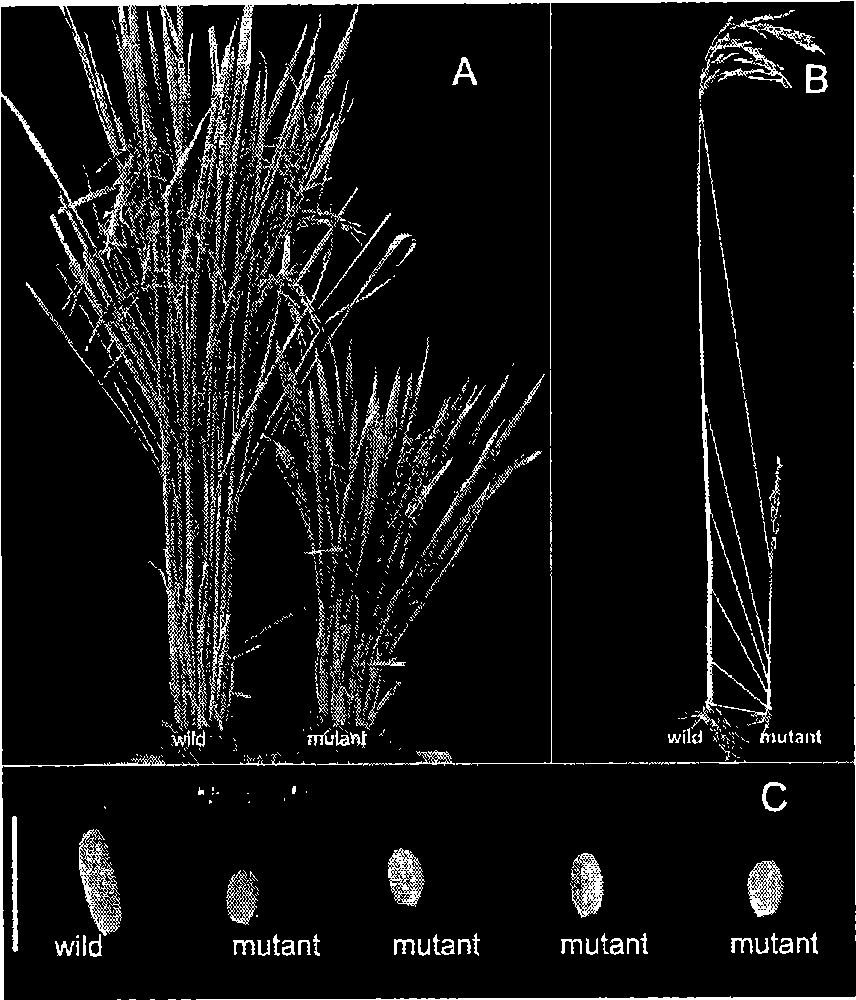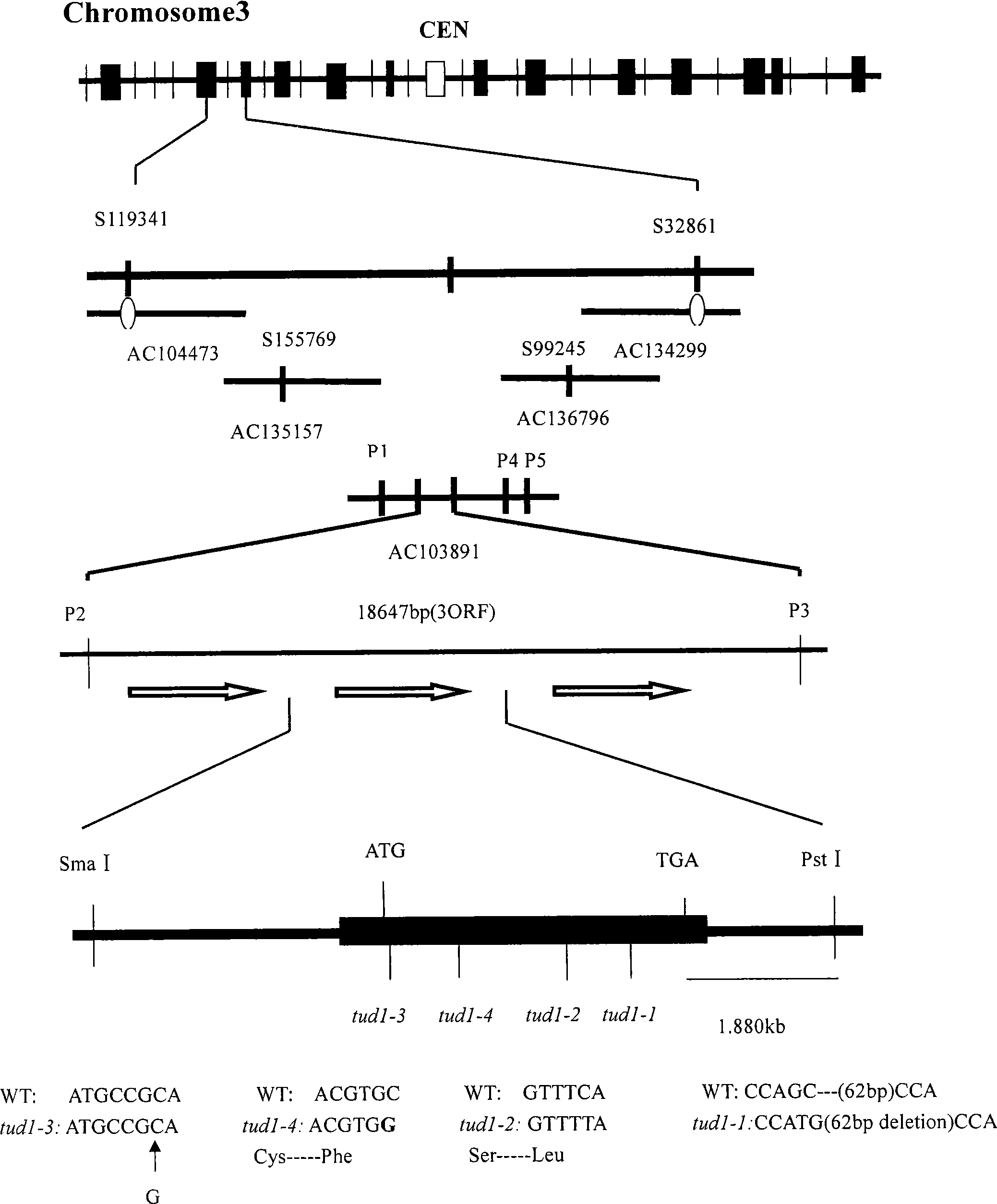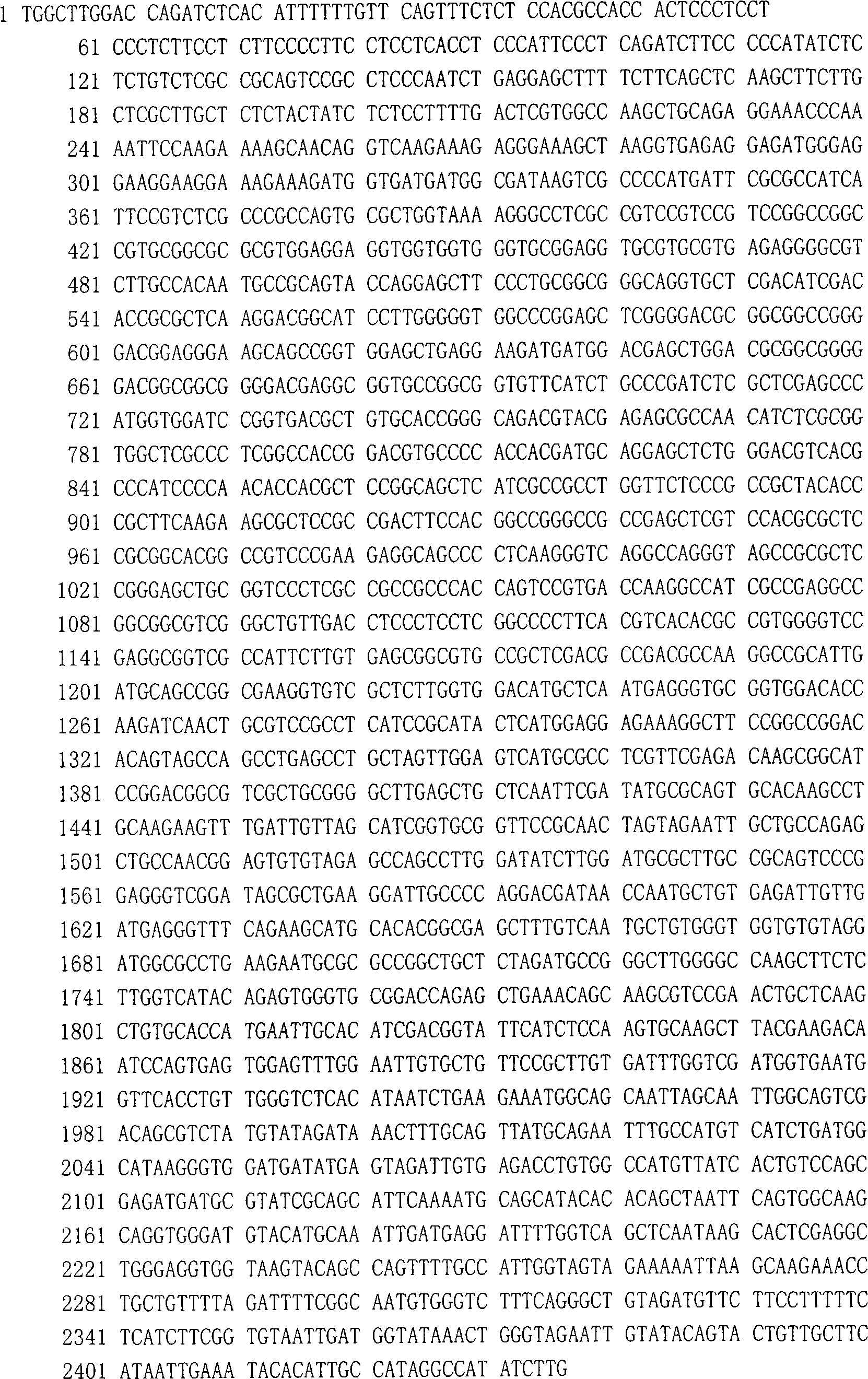Gene TUD1 for controlling rice height and grain shape and application thereof
A gene and rice technology, applied in the fields of application, genetic engineering, plant genetic improvement, etc., can solve problems such as adverse pleiotropic effects, limitations, and complex dwarf gene expression, and achieve strong operability
- Summary
- Abstract
- Description
- Claims
- Application Information
AI Technical Summary
Problems solved by technology
Method used
Image
Examples
Embodiment 1
[0043] Embodiment 1: the acquisition of rice TUD1 candidate gene
[0044] 1. Rice material
[0045] The dwarf and small-grained rice (Oryza sativa ssp.) used for positioning is a single recessive spontaneous mutant, and its original wild type is an indica variety—Minghui 63 (IR36 / Gui 630), and the other three etc. The single-recessive spontaneous mutants tud1-2, tud1-3, and tud1-4 came from breeding materials D506 (Minghui 63 / Zihui 100), H7788 (Tetep), ZH3 (Miryang 23), respectively. This line is also an indica rice background ( figure 1 )
[0046] 2. Analyze and target groups
[0047] The homozygous dwarf indica line tud1 was crossed with the japonica variety Nipponbare, F 1 A total of 7500 F 2 Individuals, and 1,680 individuals were selected as the positioning group. Take about 2 grams of young leaves from each plant at the seedling stage to extract DNA.
[0048] 3. Localization of TUD1 gene by SSR and STS markers
[0049] Genomic DNA for gene localization was extra...
Embodiment 2
[0056] Example 2: Verification of functional complementation of TUD1 gene
[0057] Use two restriction enzymes, SmaI and SalI, to excise a 4,662kb fragment with the full length of the TUD1 part from the BAC clone OsJNBa0084L08 (purchased from Shanghai Southern Gene Center), and then use SalI and PstI as enzyme linker-specific primers to amplify DNA fragments of 1,773 kb were ligated into a 6,429 kb fragment, including 3,169 bases upstream of the start codon ATG and a full-length sequence of 1,880 bases after the stop codon TGA, cloned into the binary vector pCAMBIA1300( Purchased from CAMBIA Company), obtained the plasmid pCAMBIA1300-TUD1 ( Figure 5 ) (for cloning and identification methods, see Molecular Cloning Experiment Guide (Third Edition) (Chinese translation) translated by Huang Peitang et al., Science Press, published in September 2002 ").
[0058] The plasmid was transferred into the Agrobacterium tumefaciens strain EHA105 (prepared in this laboratory, referring to...
Embodiment 3
[0066] Embodiment 3: TUD1 protein expression of wild-type TUD1 plant, tud1-3 mutant plant, transgenic TUD1 gene plant
[0067] In order to verify the expression of TUD1 protein in wild-type TUD1 plants, tud1-3 mutant plants, and TUD1-transgenic plants, we cloned the full-length coding sequence of TUD1 from wild-type TUD1 plants, tud1-3 mutant plants, and TUD1-transgenic plants. into the protein expression vector pGEX-6P1 (Amersham Biosciences). PCR amplification primers were 5'-CGGGATCCATGCCGCAGTACCAGGAGC-3' (the underlined EcoRI restriction site) and 5'-CAGTCGACTCACTGGATTGTCTTCGTAA-3' (the underlined Sal I restriction site). For the cloning method, see "Molecular Cloning Experiment Guide" (Third Edition) (Chinese translation) translated by Huang Peitang et al., Science Press, published in September 2002". The full-length coding sequence of TUD1 in wild-type TUD1 plants, tud1-3 mutant plants, and TUD1 transgenic plants was identified by sequencing. After being correctly fused...
PUM
 Login to View More
Login to View More Abstract
Description
Claims
Application Information
 Login to View More
Login to View More - R&D
- Intellectual Property
- Life Sciences
- Materials
- Tech Scout
- Unparalleled Data Quality
- Higher Quality Content
- 60% Fewer Hallucinations
Browse by: Latest US Patents, China's latest patents, Technical Efficacy Thesaurus, Application Domain, Technology Topic, Popular Technical Reports.
© 2025 PatSnap. All rights reserved.Legal|Privacy policy|Modern Slavery Act Transparency Statement|Sitemap|About US| Contact US: help@patsnap.com



